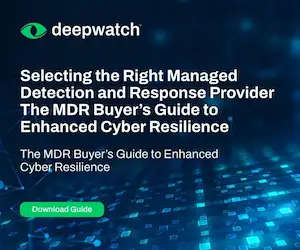
A Security Operating Platform (SOP) is an integrated architecture that unifies security tools, data, and processes across an organization’s digital environment. It serves as the central nervous system of an enterprise’s security posture, enabling streamlined operations, improved threat detection capabilities, and consistent policy enforcement.
Why Security Operating Platforms Matter
Security Operating Platforms matter because they unify fragmented security tools and workflows into an integrated ecosystem. This consolidation enables organizations to respond to cyberthreats with greater speed, consistency, and efficiency across complex, hybrid environments.
- Operational Unification: SOPs eliminate silos between disparate point solutions by integrating threat intelligence, policy enforcement, telemetry, and incident response across cloud, network, and endpoint layers. This unified architecture reduces duplication, improves context sharing, and enables security operations centers (SOCs) to execute coordinated defense strategies without needing to toggle between interfaces or tools.
- Threat Detection and Response Velocity: Speed is critical in mitigating advanced threats. SOPs leverage automation, machine learning, and behavioral analytics to reduce both the average time required to detect and respond to security warnings. Correlated insights across telemetry sources provide early visibility into lateral movement or command-and-control activity, while automated playbooks contain and remediate threats before they escalate.
- Data-Driven Decision Support: With centralized analytics, SOPs surface actionable intelligence from high volumes of data generated by diverse sources. This intelligence improves triage accuracy, reduces alert fatigue, and enables proactive threat hunting. Integration with threat intelligence feeds further enriches context, allowing SOC analysts to prioritize incidents based on real-world risk.
- Policy Consistency and Enforcement: Security policies are often fragmented across cloud providers, firewalls, identity systems, and endpoints. SOPs enforce policy uniformly across environments, reducing misconfigurations and ensuring compliance with internal standards and regulatory frameworks. Role-based access control (RBAC) and zero trust principles are consistently applied, enhancing the organization’s security posture.
- Scalability and Resilience: SOPs scale with the enterprise, accommodating growth in assets, data, and threat surface without sacrificing performance. Cloud-native architectures and modular integrations allow security teams to evolve capabilities without disrupting operations, while built-in redundancy and failover mechanisms support business continuity during incidents.
The Core Components and Capabilities of Security Operating Platforms
Security Operating Platforms are built on tightly integrated components that work together to detect, analyze, and respond to threats across the enterprise. These capabilities enable organizations to move from reactive security postures to proactive, adaptive defense models.
- Threat Intelligence Integration: Effective SOPs ingest threat intelligence from multiple internal and external sources, normalizing and correlating it across environments. This process enables context-rich alerts, improved detection of emerging threats, and the automated application of IOCs and TTPs within security controls, allowing for real-time enforcement and adaptive responses.
- Automation and Orchestration: SOPs streamline operations through playbook-driven automation of detection, triage, and response workflows. By integrating SOAR functionality, platforms reduce reliance on manual investigation, accelerate remediation, and maintain consistency across incidents. This integration reduces operational overhead while enhancing Security Operations Center (SOC) productivity and response times to threats.
- Unified Policy Management: Centralized policy management ensures consistent enforcement across firewalls, cloud services, identity systems, and endpoints. SOPs allow security teams to define, deploy, and monitor policies from a single interface, reducing configuration drift, minimizing human error, and supporting compliance requirements through enforced controls and auditable changes.
- Telemetry Aggregation and Analytics: SOPs collect and correlate telemetry from network traffic, endpoint activity, identity logs, and cloud infrastructure. Advanced analytics, including behavioral baselining and anomaly detection, enable early identification of lateral movement, insider threats, and zero-day activity. These analytics enhance cybersecurity by increasing threat visibility and supporting proactive investigation and response.
- Cross-Domain Visibility and Context: A core SOP capability is delivering a unified view across on-prem, hybrid, and multi-cloud environments. Platforms map asset relationships, user behaviors, and attack timelines, providing analysts with actionable context during investigation. This shared information overview reduces mean time to resolution and improves situational awareness.
Operational Benefits of Security Operating Platforms for Security Teams
Security Operating Platforms provide measurable operational benefits for cybersecurity teams by consolidating tools, automating workflows, and enhancing situational awareness. These platforms enable faster, more effective threat response while reducing the overhead of managing fragmented systems.
- Increased Efficiency and Reduced Tool Sprawl: SOPs streamline operations by consolidating multiple security functions, such as threat detection, response, policy management, and reporting, into a single platform. These functions reduce the need for point solutions, simplify training, and decrease time spent switching between tools. Analysts can triage and respond to threats within a unified environment, improving workflow velocity and operational consistency.
- Accelerated Threat Detection and Response: SOPs improve detection and response times by correlating events across data sources and automating predefined response actions. Integrated SOAR capabilities and behavior-based analytics reduce mean time to detect (MTTD) and mean time to respond (MTTR), allowing SOC teams to contain threats before lateral movement or data exfiltration occurs. Playbooks enable repeatable and scalable response actions aligned with incident severity and context.
- Improved Context Sharing and Collaboration: Cross-functional collaboration is enhanced through shared visibility and centralized case management. SOPs allow threat intelligence, incident response, and compliance teams to access a unified dataset with rich contextual metadata. This shared information base reduces reliance on manual handoffs, eliminates silos, and enables coordinated, role-specific responses across the incident lifecycle.
- Reduced Alert Fatigue and Analyst Burnout: By automating enrichment, filtering noise, and prioritizing high-confidence alerts, SOPs lessen the volume of low-value or redundant alerts. Analysts spend less time on manual triage and false positives, allowing them to focus on complex investigations, threat hunting, and proactive defense strategies.
The Strategic Value of Security Operating Platforms to Enterprises
Security Operating Platforms deliver strategic value to enterprises by aligning cybersecurity operations with broader business goals. They enable scalable, risk-aware decision-making while enhancing resilience, compliance, and agility across dynamic IT environments.
- Enterprise-Wide Risk Reduction: SOPs improve risk posture by providing continuous monitoring, unified threat detection, and automated response across the organization’s entire digital footprint. With integrated telemetry from cloud, endpoint, identity, and network layers, security leaders can better assess exposure, identify vulnerabilities, and prioritize remediation based on business impact and the protection of critical assets.
- Scalability and Adaptability: Modern enterprises operate across hybrid, multi-cloud, and distributed environments. SOPs offer architectural flexibility, allowing security programs to scale without introducing operational overhead. Native support for APIs, containerized workloads, and DevSecOps pipelines ensures that security policies and visibility extend seamlessly across evolving infrastructure.
- Regulatory Compliance and Audit Readiness: SOPs help meet regulatory and industry-specific requirements by enforcing standardized controls, maintaining audit logs, and enabling continuous compliance monitoring. Built-in policy templates and reporting tools streamline adherence to frameworks such as NIST CSF, ISO 27001, PCI DSS, and HIPAA. This reduces audit preparation time and helps avoid penalties associated with non-compliance.
- Enhanced Executive Visibility and Governance: SOPs offer executive dashboards and risk analytics that translate complex technical data into actionable insights for CISOs, CIOs, and boards. These insights support strategic investments, policy decisions, and threat modeling. By aligning operational metrics with business objectives, SOPs reinforce cybersecurity’s role as a business enabler rather than a cost center.
How Managed Security Services Rely on Security Operating Platforms to Protect Enterprise Clients
Managed Security Service Providers (MSSPs) rely on Security Operating Platforms (SOPs) to deliver scalable, high-fidelity protection to enterprise clients. These platforms act as the backbone for unified monitoring, advanced analytics, and automated incident response.
- Centralized Monitoring and Correlation: MSSPs leverage SOPs to aggregate telemetry from client environments, spanning endpoints, networks, cloud infrastructure, and identity systems, into a centralized console. This consolidation enables analysts to correlate disparate signals, detect threats faster, and eliminate alert silos. SOPs enhance visibility with real-time dashboards and threat correlation engines that prioritize high-risk events across multi-tenant environments.
- Automated Incident Response and Workflow Orchestration: SOPs empower MSSPs with playbook-driven automation to streamline response across diverse client infrastructures. With SOAR integrations, everyday response actions such as isolating hosts, disabling compromised accounts, or updating firewall policies can be executed without human intervention. This not only accelerates containment but ensures consistent execution of client-specific SLAs and compliance requirements.
- Threat Intelligence Operationalization: SOPs ingest and normalize threat feeds from commercial, open-source, and client-specific sources, enabling MSSPs to enhance detection fidelity and threat prioritization. Enrichment pipelines within the SOP contextualize alerts with indicators of compromise (IOCs), tactics, techniques, and procedures (TTPs), as well as behavioral analytics, providing actionable intelligence at scale.
- Multi-Tenant Architecture and Policy Enforcement: SOPs with native multi-tenancy enable MSSPs to manage distinct client environments securely while enforcing granular access controls. This architecture supports policy inheritance, custom rule sets, and client-specific configurations, ensuring the separation of duties while maintaining centralized oversight.
MSSPs depend on Security Operating Platforms to standardize service delivery, reduce response times, and improve detection accuracy across diverse customer environments. By leveraging the automation, intelligence, and integration capabilities of SOPs, MSSPs can scale operations without compromising on quality or responsiveness, delivering enterprise-grade security as a service.
Conclusion
A Security Operating Platform is more than a set of tools—it’s an operational framework that aligns security functions to enterprise goals. For cybersecurity leaders in large organizations, adopting an SOP is a strategic imperative to defend against modern threats, increase team efficiency, and future-proof their security infrastructure.
Deepwatch® is the pioneer of AI- and human-driven cyber resilience. By combining AI, security data, intelligence, and human expertise, the Deepwatch Platform helps organizations reduce risk through early and precise threat detection and remediation. Ready to Become Cyber Resilient? Meet with our managed security experts to discuss your use cases, technology, and pain points and learn how Deepwatch can help.
Learn More About Deepwatch’s Managed Security Platform and Security Operations
Interested in learning more about Deepwatch, our Managed Security Platform, and our approach to security operations? Check out the following related content:
- Deepwatch Managed Security Platform Overview: This page provides a comprehensive overview of Deepwatch’s platform, highlighting how it integrates advanced threat detection, response capabilities, and expert support to enhance cyber resilience.
- Deepwatch Security Center: The Security Center serves as the operational hub, offering visibility into security telemetry data, facilitating extended detection capabilities, and enabling strategic collaboration with Deepwatch experts.
- Holistic Modern Security Operations: This section examines Deepwatch’s approach to integrating detection and response technologies, ensuring seamless protection across enterprises through modules such as Managed Detection and Response (MDR), Endpoint Detection and Response (EDR), and others.
